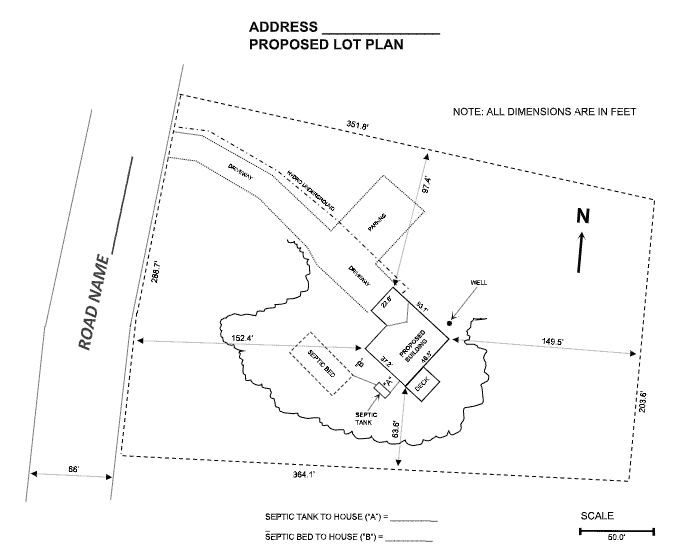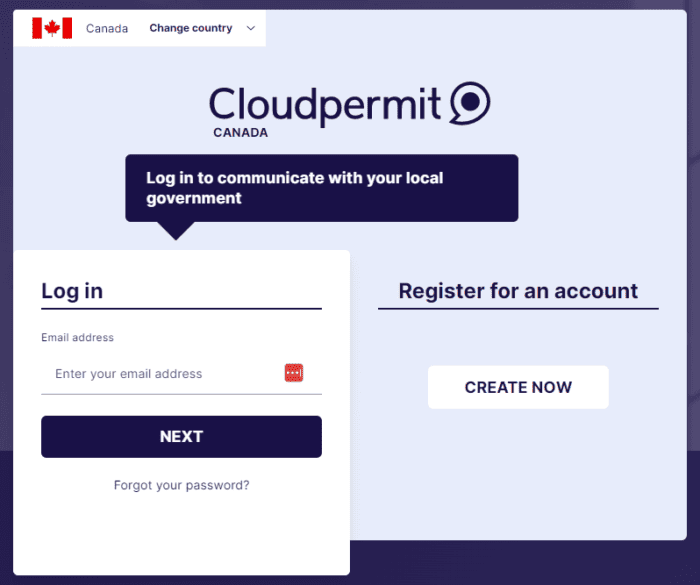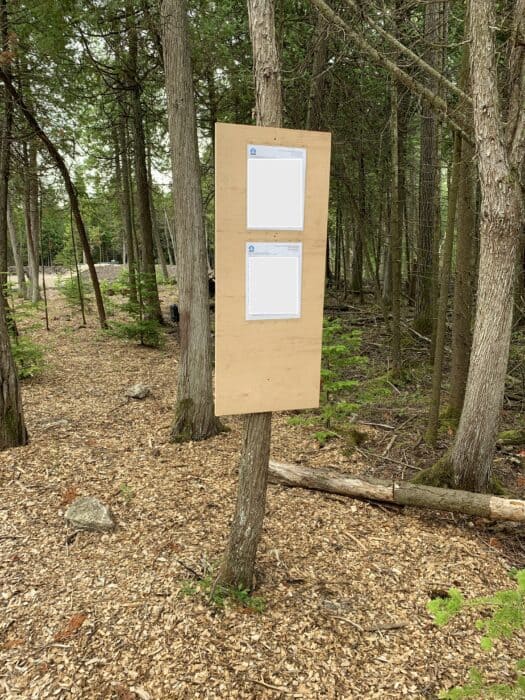One of the homeowner responsibilities when building a new home is getting the building permits. I know what you’re thinking …. it must be complicated or at least daunting. Trust me, it doesn’t have to be. With a little research, help from your builder and other contractors, it can be easy-ish. Below, you’ll read how our process went and a few tips from “the other side.”
One of my responsibilities at work is submitting permit applications to a number of townships and municipalities in the area. However, we don’t often work with the Municipality of Northern Bruce Peninsula. Knowing that every area has its nuances, I felt a little intimidated. It definitely feels different being on the homeowner side of the process; this is personal now! And just to add a little more pressure, Quality Homes can’t guarantee any dates (understandably) until permits are in place. We definitely don’t want to be the ones responsible for any delays to our schedule.
Time to Do Our Homework!
Months before we got to the actual permit stage, I went to the Municipality’s website to research their process and requirements. Knowing that each municipality is a little bit different, and that sometimes conservation authorities or other agencies might need to review a building permit application, I wanted as much time as possible to learn our requirements. Northern Bruce Peninsula has a fantastic Guide to Building Permits that’s well worth the read if you’re building up here.
I also read this article and watched the video below provided by Quality Homes. Then I was much more confident that I could do our part in making the process as smooth as possible.
I was relieved most of all to learn that we didn’t need any official engineered site plans or official surveys. That saves us a good amount of money in our budget and a lot of time. We only needed a site plan, and Brian was able to create a satisfactory one electronically (hand drawn would have been acceptable as well) that had all the required site measurements. Our site plan had to include:
- Lot lines and dimensions
- Site clearing/building envelope
- Placement of the house, septic system, well, and driveway
- Measurements for the house to the lot lines, the house to septic bed, and house to the septic tank.

How to Find Building Permit Information for Your Area
Most cities, townships and municipalities have a similar website structure so this should work …
- Navigate to your area’s website and find the search tool, enter “building permit” and enter. The results should pop up easily.
- Alternatively, you can use Google to search for your area + building permit. As a test, I entered “Tobermory Building Permit” and the first result was the municipality’s building permit page.
Of course I didn’t use either of these easy ways at first. I went through the whole Google > Municipality website > Live > My Property > Building Permits. It was still pretty easy but way more clicks than it needed to be!
Submitting Our Permit Applications
From here, things got even easier! The week before our Personal Selection Day, we received an email from Kimberley, the Permit Coordinator at Quality Homes. In that email she clearly defined the process going forward, that we would need two applications (one for the septic and one for the home), and outlined responsibility assignments clearly. That’s another win for Quality Homes in my opinion! She too had already researched conservation and engineering requirements and confirmed that these items were not required for our permits. That email also gave us a timeline for when we would expect to be able to submit our applications: once the drawing package, site plan and septic plans were ready.
Armed with the permit guide from the municipality and our checklist from Quality Homes, all we had to do was wait for the set of drawings to be ready. Fortunately, we didn’t have to wait long! I suppose that’s another benefit to purchasing a modular/factory built home, and using their base model as a starting point, their drafting team is able to produce your plans quickly. Within 2 weeks of our personal selection day, the drawing package was ready! BUT … we couldn’t submit them until I had the septic permit application ready to go.
Why can’t I submit my house permit application without the septic application?
One of the crucial elements on any rural home property is the septic system. Therefore, it makes sense that the Building Department would need that information to assess your new build as a complete entity. It’s an easy way for them to cross reference the capacity of the planned septic system with the fixtures and rough-ins your new home will have.
Double check with your building authority or your builder to confirm your local requirements – unless you’re working with Quality Homes, then their Permit Coordinator will let you know exactly what you need.
Why do I need two separate applications if my new build is viewed as a package?
I don’t know, so I asked Kimberly at Quality Homes; here is her response: “Your septic system is designed by a different designer than that of the house; they have their own qualifications as do the installers and the Building Inspectors.” Each qualified designer must submit their license number and information on a building permit application and there’s only room for one on the application. I’ll note here that building codes and permit requirements are regulated by the provincial government (that’s where the forms come from) and the management of these is handled by the municipalities.
Kimberley continues … “The fact is some building departments don’t issue septic permits but rather they team up with a Health Board or other agencies that are specifically qualified.
A few examples:
- Tiny Township works with Tatham Engineering and everything is done on-line and linked together but you need to have septic confirmed before a building permit is issued.
- Areas such as Parry Sound to Sudbury go through the North Bay Mattawa Conservation Authority’s septic branch.
- Niagara Region is a large area and has their own processing division.
Then you bring your septic permit and apply to the building department for your build permit.”
Getting Your Permits Quickly is Important to Your Builder
Have I mentioned that the timing is crucial on the permit process with Quality Homes? This is because they can’t give us firm build dates until the permits are issued. This seems reasonable to me considering that anything can be challenged or extra documentation can be requested by the municipality. Any extra documents, meetings or other requirements take time. We certainly didn’t want to lose our build date so the pressure was on!
Since it was up to me to get the septic permit information from our contractor, I worked on that while we waited for the drawing package from Quality Homes. Even with consistent check-ins it took a little while for the septic contractor to have an opportunity to prepare our septic plans for that application. That’s what happens when you’re working with a busy contractor – even if you’re working for them you can still be on a list. I’m pretty sure I’ve pushed the line between helpful employee and annoying customer more than once – so far!
All in all though, it didn’t take too long to have all my documentation ready to submit.
An Introduction to Cloudpermit
The Municipality of Northern Bruce Peninsula, like many municipalities, uses an online permit management system called Cloudpermit. It helps manage the process from application to inspections, to final sign-off. All parties have access to documentation and communications throughout the work flow. Even though the permit process is complex, Cloudpermit has managed to make the interface fairly easy to use. After a short time using it at work, I’ve come to prefer it over email to manage the process.
If your municipality uses Cloudpermit, you can create your free account at any time. You can even start to create your application whenever you like. It will be held in draft mode until all required documents are attached and you sign off the application!
Ask your builder and septic system installer if you need to submit the applications or if they will do it for you. I’m not sure about builders but some septic installers will prepare and submit the application for you. I’m not sure that it matters who initiates the application since all parties are invited to the permit application (called a workspace) in Cloudpermit.

My Top Tips for Cloudpermit
- When inviting your builder or contractors to your workspace, grant them editing permission. If they’re building the workspace, don’t be offended if they give you read only access. You’ll still be able to see what’s going on throughout the process.
- If you’re given documents as a package you can select multiple document types for one upload. This is a big time saver because you won’t need to split PDFs or wait for multiple uploads.
- Enable notifications in your personal settings. That way you will receive an email when any updates or messages occur. This will save you constantly logging in to check if anything is happening on your permit application.
- Even though Cloudpermit is used as a tool by your municipality, you’ll probably learn quickly which communication methods or other “quirky” operating methods your building department uses. For example, even though the entire building document package was submitted via Cloudpermit, our building department still requested that the same package be sent in hard copy to their office.
Permits Issued!
With consistent checks from Kimberly until everything was submitted, including a nudge to submit the site plan I thought I had in the package, we were back on track. Between the complete document set provided and Kimberley’s good working relationship with the Chief Building Official, our permits went through unchallenged within a month. Then we had to post them in a visible place on the property and make sure a complete set of permit documentation was stored in a safe place on site.

I know of a number of townships that aren’t so smooth, and it certainly would have been a more complex process had we needed engineered grading, variances or conservation permits. I can confidently say though that having an engineered home by a builder with permit expertise, a great reputation and good relationships with township authorities, this process was much less daunting than it could have been.
Recent Posts
7 Totally Selfish Reasons to Choose Native Plants for Your Gardens
Grab a cup (or glass) of your favorite beverage, and let's delve into what I’ve learned so far about why it's incredibly important and wildly selfish to embrace landscaping with locally native...
Exploring the differences, benefits and drawbacks of Broadcast Sowing and Frost Seeding for Native plants.

